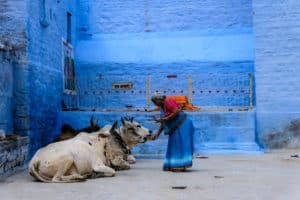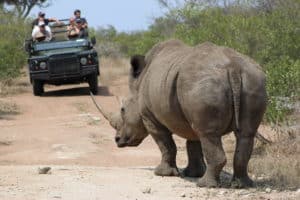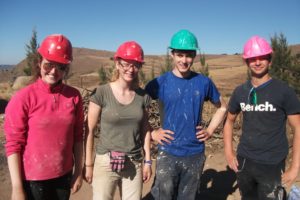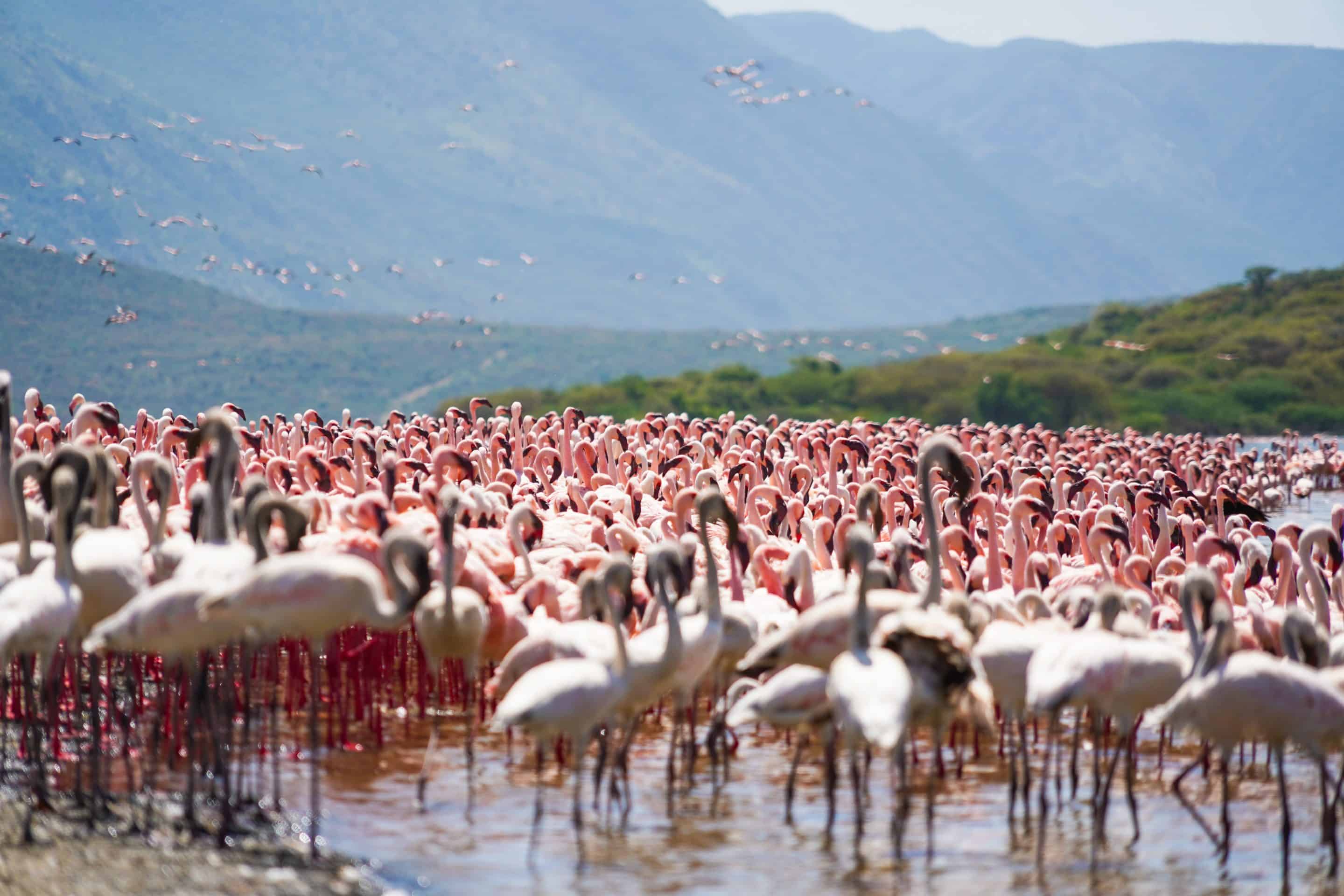Wild Flamingos
Witnessing the sight of wild flamingos in Kenya, the wilds of Africa is truly a wonder to behold. These magnificent creatures, with their vibrant pink feathers and unique physique, create a mesmerising spectacle that captivates any observer. As they elegantly wade through shallow water, their long, slender legs and curved beaks make them appear almost otherworldly. The sheer number of flamingos in a single flock is awe-inspiring, and the way they move together in unison is a sight to behold. Seeing these majestic birds in their natural habitat is an unforgettable experience allowing you to appreciate the beauty and diversity of the animal kingdom.
What Species of Flamingo Can You Find in Kenya?
You can see both the greater and lesser flamingos in their natural habitats whilst flamingo watching in Kenya. Greater flamingos are larger and have a pale pink bill with a black tip. Lesser flamingos are smaller and have a deep pink bill. Their breeding patterns vary depending on the species but they usually breed during the wet season when there is an abundance of food.
What Is The Collective Term For A Flock Of Flamingos? – Wild Flamingos
A group of flamingos is called a “flamingo colony” or a “flamboyance”. The term “flamboyance” is derived from the French word “flamboyant”, which means “flaming” or “glowing”.
It’s used to describe a group of flamingos because of their bright pink feathers, which are the result of their diet of carotenoid-rich algae and crustaceans. When a group of flamingos is gathered together, their vibrant colours make them an impressive and beautiful sight making the term flamboyance a fitting name.
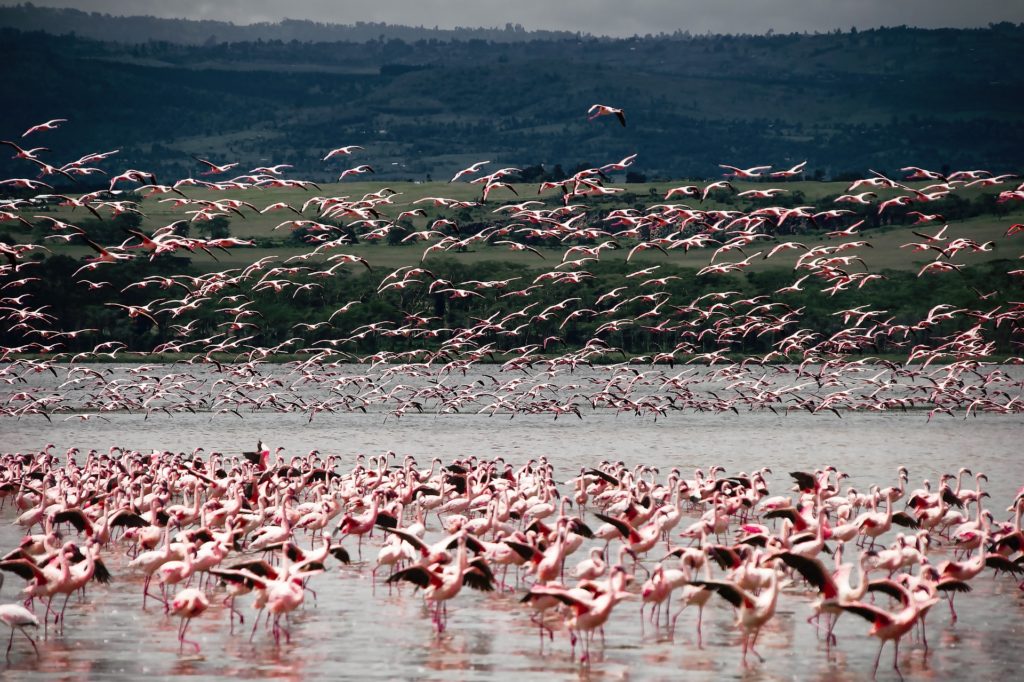
What’s The Best Way To See Flamingos In Kenya?
The best way to see the flamingos is by taking a guided tour, either by car or on foot. You can also take a boat tour to get a closer look at the birds. It is essential to respect the bird’s habitat and keep a safe distance to avoid disturbing them.
A fantastic opportunity to view a flamingo colony is to join us on the Discover Kenya in Style group tour where you’ll enjoy low-flying scenic flights in your very own private plane over some of the most impressive soda lakes in Kenya.
Behaviour Of The Greater Flamingo – Wild Flamingos
Greater flamingos are known for their unique behaviours, which are closely tied to their social structure and habitat. They feed by wading in shallow water and using their beaks to filter out algae, crustaceans, and other small organisms. Specialised bills allow them to filter out food from the mud and water, and their long legs allow them to reach deeper water. They are highly social birds, known for their synchronized movements which include swaying their necks and moving their heads in unison. This behaviour is believed to help the birds stay coordinated while searching for food and avoiding predators.
During mating season, male flamingos perform a courtship display to attract females. This display includes standing tall and extending their wings, as well as calling and head bobbing. Once a pair is formed, they engage in preening and other behaviours to strengthen their bond. Greater flamingos typically build nests out of mud, creating small mounds that help protect their eggs from flooding. Both males and females take turns incubating the eggs, and both parents care for the chick once they hatch
Behaviour Of The Lesser Flamingo
These birds are known for their unique adaptations to their harsh and unpredictable habitats. They feed on blue-green algae that grow in shallow alkaline lakes and use their bills to filter out the tiny organisms from the water, often standing on one leg to conserve energy while feeding.
During the breeding season, male lesser flamingos perform a courtship dance, which involves head bobbing, wing flapping, and honking calls. Males also bring sticks or other materials to their mates as a way of bonding. Like their Greater cousins, the Lesser flamingo’s parents both help take care of the eggs and chicks once they hatch.
Lesser flamingos have a unique adaption that allows them to thrive in their alkaline and often harsh habitats. Their legs and feet are adapted to withstand the corrosive properties of the water, and they have specialised glands above their eyes that secrete a salty solution, which helps them stay hydrated.
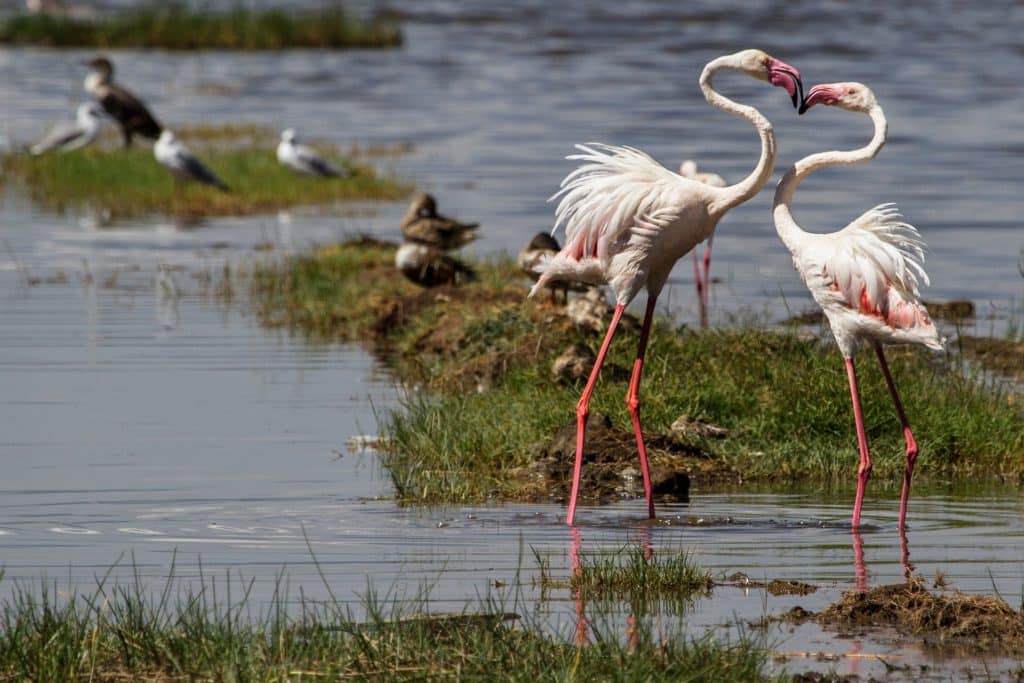
Why Are Flamingos Pink? – Wild Flamingos
The pink colour of flamingos comes from the natural pigments in the algae, crustaceans, and other small aquatic animals that they eat. These pigments are called carotenoids, which are organic compounds that contain orange and red pigments.
Flamingos filter-feed on small organisms like algae and shrimp that contain these carotenoids in their bodies. The carotenoids are then broken down and absorbed by the flamingos’ digestive system, and the pigments are stored in their feathers, skin and beaks, giving them their distinctive pink colour.
The intensity of the pink colouration of flamingos can vary based on the availability of carotenoids in their diet. Flamingos that feed on a diet rich in carotenoids tend to have brighter pink feathers, while those that feed on a less nutritious diet may have a paler shade of pink.
Young flamingos don’t have the pink colouration right away. It takes several years for the birds to develop their pink colouration as they grow and begin to consume more carotenoid-rich food.
Where Can You See Flamingos In Kenya?
Kenya is home to several lakes where you can see flamingos, but the two most popular ones are Lake Nakuru and Lake Bogoria.
Lake Nakuru is a soda lake located in the Great Rift Valley and is home to both the greater and lesser flamingos. The best time to see them is during the dry season from July to October. During this time, the lake’s water level decreases leaving behind a high concentration of algae which is their primary food source.
Lake Borgoria is also a soda lake and is best known for its hot springs and geysers. The lake is home to the lesser flamingos with the best time to see them here is between November and April when the lake is at its shallowest and has a high concentration of blue-green algae, their primary food source.
How Are Soda Lakes Created? – Wild Flamingos
The soda lakes are formed in areas with high volcanic activity which can cause the land to be tectonically unstable, resulting in the formation of depressions or basins in the earth’s surface such as the Great Rift Valley in Kenya. These depressions fill up with water and become lakes. However, unlike freshwater lakes, which are fed by rivers and streams, soda lakes are formed through a combination of rainfall and groundwater, as well as geothermal activity.
Soda lakes get their name from the high concentration of soda or sodium carbonate in the water. This high concentration of soda is due to the fact that the lakes are located in these high volcanic activity areas which results in the release of volcanic ash and gases in the water. As the water evaporates, the soda and other minerals become more concentrated, creating a highly alkaline environment.
The high alkalinity of soda lakes makes them unique ecosystems, home to a variety of specialised organisms that have adapted to live in these extreme conditions. Algae, bacteria, and other microorganisms thrive in alkaline waters, providing a food source for the many bird species, including the flamingos that visit.
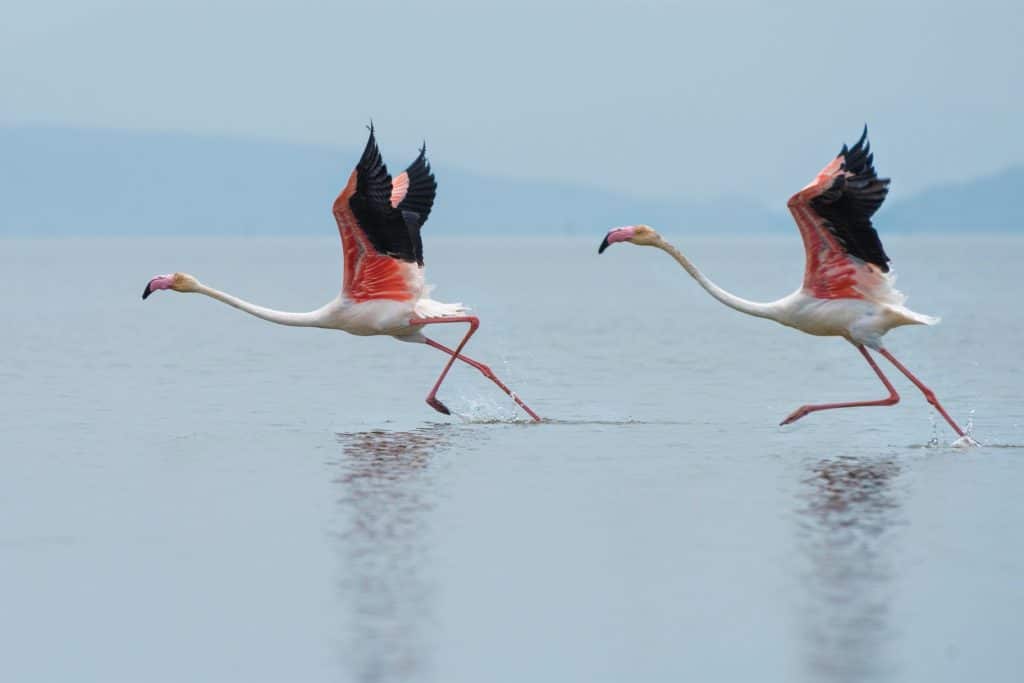
Which Lodges Are The Best To Stay At To See Flamingos?
There are several lodges and camps located near Lake Nakuru and Lake Borgoria that offer visitors an excellent opportunity to see the flamingos in Kenya. Here are some of the best:
Located within Lake Nakuru National Park the lodge offers comfortable accommodations, delicious meals and excellent views of the lake.
Another lodge within Lake Nakuru National Park, it offers breathtaking views of the lake and the surrounding wilderness. The lodge has a range of facilities, including a restaurant, bar and swimming pool.
The lodge is located on the shores of Lake Borgoria and offers guests stunning views of the lake and the flamingos. It has a spa, restaurant, and range of activities like bird watching, hot springs, and cultural visits.
Located on the shores of Lake Elementaita, which is home to flocks of flamingos. The camp offers luxurious tents, excellent meals and a range of activities like bird watching, nature walks and cultural visits.
Lake Naivasha Sopa Resort
The resort is located on the shores of Lake Naivasha offering stunning views of the lake and its flamingos. The resort has comfortable accommodations, a restaurant and a range of activities such as boat rides, nature walks and bird watching.
